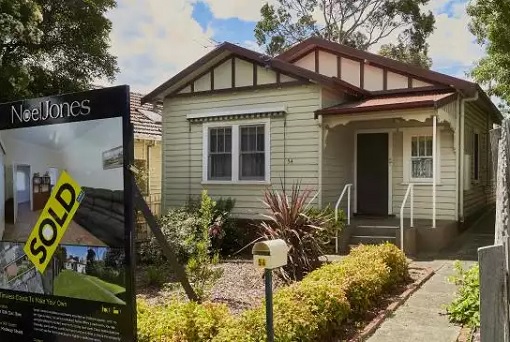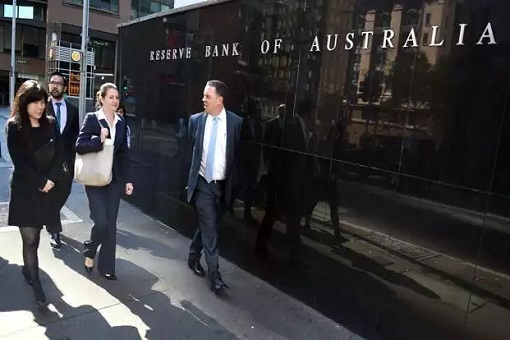The land down under was a great place to invest, especially its property or real estate. Parents from neighbouring Asian countries have been pouring billions of dollars snapping up properties – either for investment or for their children’s education. Chinese parents love sending their kids to a foreign country to further their education, and Australia is one of the top destinations.
The impact of Chinese buyers on the real estate market in Australia has been nothing but impressive. But it wasn’t the property market alone that has benefited from the Chinese hot money. Those rich kids from mainland China brought along their buying power, buying everything under the sun – cars, clothing, handbags, sunglasses and whatnot – everything designer.
They’re no longer what the Aussie used to call “the Chinese immigrants” or refugees looking for a better life in Australia. Students spending US$16,000 on a handbag is a common trend. The latest influx of wealthy Chinese who have sent their children to Australian universities means the local property market also experienced tremendous sales.

After a multi-year boom, the cost of an average home in the country now sits at 669,700 Australian dollars (US$529,000; £407,000; RM2.26 million). Eventually, the musical chairs will have to stop. And according to researchers at the Swiss bank, UBS, the property market in Australia is just too hot to handle; therefore, the bubble could burst anytime now.
What the Australian housing market needs is a little push in the form of interest rates hikes by the country’s central bank – Reserve Bank of Australia (RBA) – and voila, it could trigger a crash. The Australian government data shows the growth in residential property prices at 10.2% year on year for the 2017 March quarter. So what’s the problem here?
The problem here is that the housing starts tumbling 19% in the first quarter of the year and May’s mortgage approvals also plunged 20%. Recently, the Turnbull government said they are prepared to further intervene in the housing market, if the federal budget’s housing package fails to calm rising house prices. Effectively, the Australian government is equally concerned of a bubble burst.

Everyone agrees that Australian properties have become too ridiculously expensive, particularly in Sydney and Melbourne, and housing prices have stalled. Clearly, this is the first recipe that what will happen next isn’t going to be pretty. But certain people refuse to use the word “collapse”. In fact, they argue that Australia has never experienced a “crash” in housing market.
Instead, they prefer to use the word “correction”, where property prices go down slightly – in an orderly manner. Additionally, they argued, the unemployment isn’t terrible that it could trigger a wave of forced home sales, even if the government is reckless enough to raise interest rates. And they couldn’t find any reason why the Turnbull government would be dumb enough to do it.
The funny thing is, that was how they argued about the U.S. property market, just before the 2008 subprime crisis exploded. The fact is the longer that prices boom, the closer they get to a correction (if that’s the word you like instead of “a crash”). AMP Capital chief economist Shane Oliver has forecast the price growth to slow this year, and home prices in Sydney and Melbourne to drop 5-10% next year.

Like any governments too scare to poke the beehives, the Reserve Bank of Australia has left the official cash rate on hold at a record low 1.5%. But the government couldn’t ignore the reality that they aren’t convinced that the labour market is strong enough to begin thinking about tightening rates. In the meantime, the growth in housing debt continues to skyrocket.
CoreLogic Australia head of research Tim Lawless said the RBA was actually “stuck between a rock and hard place”. The Australian government could not afford to push the official interest rate higher just to slow house price growth in two cities if that would mean damaging the broader economy. Of course, hardcore property speculators and investors disagree a crash would happen.
Author, investor and university lecturer Peter Koulizos said there was no need to panic about housing affordability, let alone a crash, and he questioned how many buyers remembered the days of double-digit home loan interest rates two decades ago. He said – “Housing affordability today is better than it was in the 1980s and 1990s when interest rates were 17.5%.”

Well, since the Reserve Bank of Australia isn’t going to raise its rate anywhere near 17.5%, why was Governor Philip Lowe then so damn worry about raising the interest rate? That’s because household debt is too “high” relative to incomes, making it likely that many Australians would respond to a market correction with a “sharp correction in their spending”.
Yes, the chain reaction is scary. The amount of debt that Australians carry, their low savings rate, their approach to debt (happy go lucky), and their high levels of consumption means if the Reserve Bank interest rate went up from 1.5% to 3.5% (still miles away from 17.5%), that could cause a lot of pain to Australia. The Australians are reaching the tipping point despite enjoying easy money.
Australian households owed debt in the March quarter equal to 190% of their yearly disposable income – a new all-time high. If salaries or the value of homes fall, many families – and the banks they owe – will be hurt. Moody’s, a ratings agency, recently warned that Australian households are leveraged to about the same degree as those in Ireland before its property market crashed in 2007.

In fact, not even the Americans, just before it plunged much of the world into economic chaos back in 2008, had a debt-income ratio as high as Australia’s current 190%. A year before the U.S. subprime mortgage crisis, the U.S. household debt was estimated to be close to 140% only. Data from the Reserve Bank confirmed that Australia’s debt mountain is largely due to soaring property prices.
Citibank predicts that property investment could fall by nearly 6% in 2018. A recent poll found that the majority of non-homeowners worry that they will never own a place. Last month, the Swiss-based Bank for International Settlements warned that Australia’s surge in household indebtedness was likely to constrain future economic growth and increase the nation’s susceptibility to another crisis.
The government hates to admit it but tax breaks and popular interest-only loans have encouraged speculators and even foreign investors to buy houses and leave them empty, and Australian property is seen as a safe haven for Chinese riches. While the wealthy Chinese couldn’t care less about overheating property market, the same cannot be said about local Australians.

Hence, the good news is the Australian housing debt is heavily skewed towards the wealthy top 20%. That is the only different from what occurred in the United States in the run-up to the subprime crisis. Still, the bad news remains that those mortgages are eating up the peoples’ retirement. One way or another, the bubble is going to burst. The Australian government might just (suddenly) raise interest rates.
Other Articles That May Interest You …
- Australia Will Get World’s Largest Battery – Free – If Musk Fails Within 100 Days
- “Now Everyone Can Pray” – The Scariest 90-Minute Ride AirAsia Could Offer
- China Invasion – Top 10 American Iconic Brands Now Owned By Chinese
- Brexit – Australia Can’t Wait So They Offer Free Trade Deal With Britain
- Why Is Pokémon GO Taking Over U.S., Australia and New Zealand?
- Here’s How Lucy The Robot Queues To Buy iPhone 6S In Australia
- Jobless And Need One Urgently? Go To Australia Now – The Land Of Jobs
- 10 Companies That Control Almost Everything You Buy & Eat
- Debts & Deficits – 21 Currencies That Have Gone Bust

|
|
July 26th, 2017 by financetwitter
|


|

|

|

|

|

|




























Comments
Add your comment now.
Leave a Reply